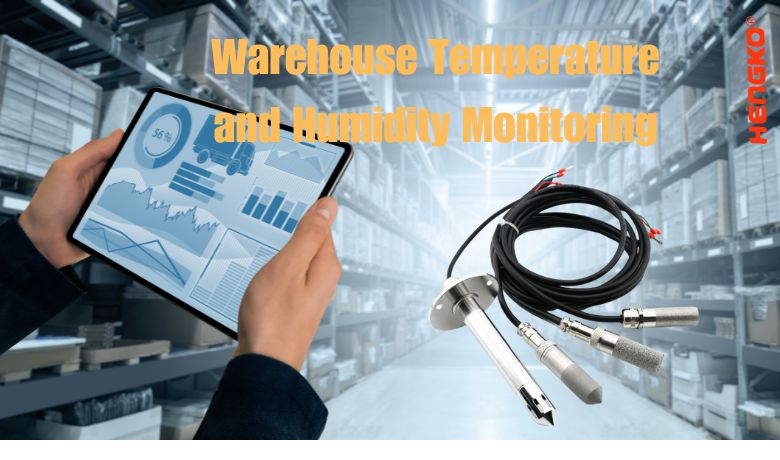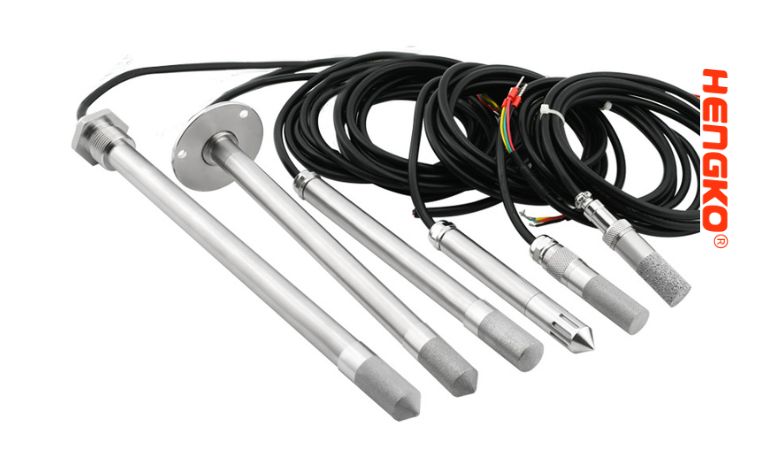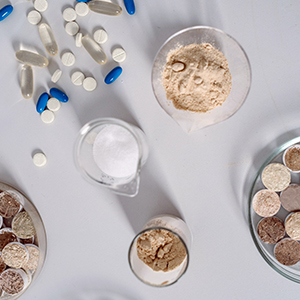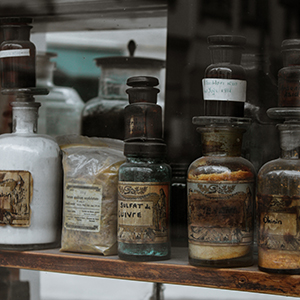
Warehouse Temperature and Humidity Monitoring is very Important
In industry, temperature and humidity measurements are important because they can affect the cost of a product. Poor storage conditions can expose delicate drugs and biologics to changes in temperature and humidity, which can be very costly in the form of product spoilage and reduced efficacy. Therefore, temperature and humidity monitoring are important.
Warehouse temperature and humidity monitoring is indeed crucial for various reasons. Maintaining proper temperature and humidity levels in a warehouse environment is essential for the preservation and quality of stored goods, as well as the overall safety and efficiency of operations.
Here are some reasons why warehouse temperature and humidity monitoring is important:
-
Product Quality: Certain products, such as perishable goods, pharmaceuticals, electronics, and chemicals, require specific temperature and humidity conditions to ensure their quality and shelf life. Monitoring these factors helps prevent spoilage, degradation, or damage to the products, ultimately protecting their value and customer satisfaction.
-
Compliance with Regulations: Many industries have strict regulations and guidelines regarding temperature and humidity control. Monitoring these parameters ensures compliance with industry standards, government regulations, and safety protocols. It helps avoid penalties, product recalls, and legal issues that may arise from inadequate storage conditions.
-
Preventing Mold and Pest Infestations: High humidity levels in a warehouse can create a favorable environment for mold growth and attract pests. Monitoring humidity levels allows for early detection of excessive moisture, enabling preventive measures to be taken, such as proper ventilation, dehumidification, or pest control measures. This protects the warehouse, its contents, and the health of employees.
-
Equipment Performance: Temperature and humidity can impact the performance and lifespan of equipment, such as refrigeration units, HVAC systems, and machinery. Monitoring these factors allows for proactive maintenance, timely repairs, or adjustments to optimize equipment performance, energy efficiency, and reduce the risk of breakdowns.
-
Employee Comfort and Safety: Working in extreme temperatures or high humidity conditions can negatively affect employee comfort, productivity, and health. Monitoring and controlling the warehouse environment help create a more comfortable and safer working environment, promoting employee well-being, reducing the risk of accidents, and improving overall productivity.
-
Energy Efficiency and Cost Savings: Monitoring temperature and humidity levels enables better energy management within the warehouse. By identifying areas where energy consumption is excessive or inefficient, appropriate adjustments can be made to optimize energy usage, reduce utility costs, and minimize the warehouse's environmental footprint.
Overall, warehouse temperature and humidity monitoring play a vital role in preserving product quality, complying with regulations, preventing damage, ensuring employee safety, and optimizing operational efficiency. Implementing a robust monitoring system and utilizing data-driven insights can lead to significant benefits for businesses operating in warehousing and logistics sectors.

What factors you should care for Warehouse Temperature and Humidity Monitoring for pharmaceutical storage
Then let's comes to warehouse temperature and humidity monitoring for pharmaceutical storage, several crucial factors should be considered. Given the sensitivity of pharmaceutical products to environmental conditions, precise control and monitoring are paramount. Here are the factors you should pay attention to:
-
Temperature Control: Maintaining the correct temperature is vital for pharmaceutical storage. Different medications may require specific temperature ranges to ensure their stability and efficacy. It is essential to monitor and regulate the temperature throughout the warehouse, including storage areas, refrigerated sections, and transportation zones.
-
Temperature Mapping: Conducting temperature mapping studies is crucial to identify temperature variations within the warehouse. This involves strategically placing temperature sensors or data loggers at various locations to record temperatures over time. Mapping helps identify hotspots, cold spots, or areas with temperature fluctuations, enabling corrective actions to be taken and ensuring consistent temperature control across the entire storage facility.
-
Temperature Alarms: Implementing temperature alarms is essential to promptly detect and respond to temperature excursions. If the temperature deviates from the acceptable range, an alarm system should alert responsible personnel to take immediate corrective measures. This ensures timely intervention to prevent any potential damage to pharmaceuticals.
-
Humidity Control: Controlling humidity is equally important in pharmaceutical storage. Improper humidity levels can affect the stability and quality of medications, leading to degradation or loss of potency. Monitoring and maintaining the appropriate humidity range, typically specified by the pharmaceutical manufacturer, is essential to ensure product integrity.
-
Calibration and Validation: Regular calibration and validation of temperature and humidity monitoring equipment is crucial to ensure accurate readings. Calibration involves comparing the measurements of monitoring devices to a reference standard, while validation ensures that the monitoring system consistently performs within acceptable parameters. These activities should be conducted at regular intervals as part of quality assurance procedures.
-
Data Logging and Documentation: Proper documentation of temperature and humidity data is essential for compliance and quality control. Establishing a robust data logging system that records and archives temperature and humidity readings is important. This documentation serves as evidence of adherence to regulatory requirements, helps identify trends or patterns, and facilitates analysis and troubleshooting if issues arise.
-
SOPs and Training: Developing standard operating procedures (SOPs) for temperature and humidity monitoring is critical. SOPs should outline the specific processes for monitoring, recording, and responding to temperature and humidity deviations. Additionally, providing appropriate training to personnel responsible for monitoring and maintaining storage conditions ensures that they understand the importance of their role and follow the correct procedures.
By addressing these factors and implementing a comprehensive temperature and humidity monitoring system, pharmaceutical storage facilities can ensure the integrity and quality of their products, comply with regulatory guidelines, and safeguard patient safety.
How to ensure Pharmaceutical in good condition in warehouse by temperature and humidity monitoring
HENGKO's temperature and humidity sensors are among the most commonly used environmental sensors. It is widely used to provide the actual humidity conditions in the air at any given point or any given location. This type of equipment is often used in situations where air conditions may be extreme, or where air conditions need to be controlled for different reasons.
1. What defines the quality of a drug
Pharmaceutical products must be manufactured, transported, stored, and dispensed in a specific manner that meets the specific product requirements specified by the manufacturer. Product quality is defined by purity, proper labeling, efficacy, and safety of use. Proper storage conditions are essential to maintain quality, and when storage conditions are poor and temperatures and humidity vary, product quality may be compromised, resulting in reduced efficacy and even the formation of volatile compounds.

No further inspections or quality control tests are performed on individual products after the drugs are received in the warehouse. Maintaining optimal temperature and humidity conditions is critical to maintaining product quality. If a product degrades or is damaged at this point, there are no safety measures in place to prevent it from being made available to patients.
Because of this risk, it is vital that warehouses use standard procedures and trained staff to ensure that products are handled, stored, and delivered safely and with the same quality. Large warehouses will install the temperature and humidity monitoring systems, integrating the installation of many temperature and humidity measuring instruments to monitor the temperature and humidity data of the environment. Temperature and humidity monitoring systems are a valuable asset for companies with logistics quality control processes, and the installation of temperature and humidity sensors demonstrates their commitment to inventory quality and adding value to their customers, and helps build the reputation of a company with quality warehousing and high standards of service.
2. What are GWP and GDP
Rules and regulations governing the industry have been developed to protect products from poor storage and distribution practices. some of the practices mandated by the GWP and GDP include controls on how goods are received, quality control of the warehouse storage environment, managing components and products, fulfilling picking requests, and shipping products to their destinations.
Industry-specific rules under the GWP and GDP allow manufacturers to Protect pharmaceutical products from damage during transport, Prevent product degradation due to exposure to adverse environmental/temperature conditions, avoid contamination by other materials, maintain product identification and traceability, and prevent the use of expired and damaged materials or products.
3. Storage Best Practices
One of the most expensive problems that can occur in the pharmaceutical industry is improper storage or loss of products. Some studies have shown that 25% of vaccines may be less effective due to failure to maintain the cold chain. This means that storage conditions for pharmaceutical products are critical for pharmaceutical companies that need to protect their products and move them smoothly through the distribution chain to pharmacies.
To prevent contamination and deterioration of products during storage, the following common storage rule must be observed: No package should be left unsealed. This practice protects against possible contamination by dirt, the environment, or insects.

All pharmaceutical products must be stored within their labeled temperature zones. Some examples are:
- Store at 2°C - 8°C,
- do not freeze,
- store below 25°C,
- warehouses should also use the FIFO system.
Because medications also deteriorate and lose their effectiveness over time, they have specific expiration dates. If the inventory is not rotated correctly, this practice can lead to partial downgrades or the use of older products, negatively impacting patient outcomes
Warehouses must also be aware of the chemical handling hazards of certain products in the pharmaceutical industry. Chemical spill procedures must be followed to ensure that personnel and other products are protected. To maintain the required stable environmental conditions, exterior warehouse doors and exits should be closed whenever possible. Exposure to these elements may result in temperature excursions at high or low temperatures as well as external dirt and pest contamination. Products must always be properly labeled. If it is not, or if the label is missing, the stock should not be used.
The warehouse must also be kept clean, dry, and organized at all times. Regular checks are made to ensure that storage containers and packaging are properly sealed, a regular cleaning schedule is maintained, and all spills are cleaned immediately.
Temperature and humidity monitoring is a very important part of pharmaceutical storage and all freezers and refrigerators should be monitored and alarmed. HK-J9A100 and HK-J9A200 series temperature and humidity loggers are designed to control temperature and humidity parameters within the range of -20°C to 70°C and humidity measurement range of 0% to 100%. You can use them for temperature and humidity monitoring for both indoor and outdoor product storage. The wireless sensor has a built-in lithium battery that can work for up to several years.
In addition to this, regular warehouse temperatures in other areas should be monitored, especially for goods that require storage temperatures to be maintained. All temperature records should be reviewed and analyzed frequently. All temperature deviations should be investigated and their impact assessed.
For reliable warehouse temperature and humidity monitoring solutions, we recommend reaching out to HENGKO. They specialize in providing high-quality monitoring systems to ensure optimal storage conditions.
To inquire about their products and services, please contact HENGKO by email at ka@hengko.com. Our knowledgeable team will be happy to assist you with your warehouse monitoring projects.
Don't hesitate to get in touch with HENGKO today to ensure the quality, safety, and compliance of your pharmaceutical storage environment. Email them at ka@hengko.com now!

Post time: Aug-15-2022




